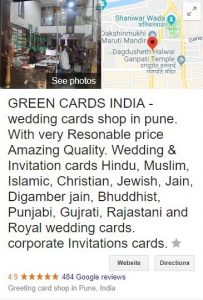According to the Harvard Business Review, more and more sales organizations are shifting their resources from field to inside sales. That’s because inside sales is not only cost effective, but it is also delivering the goods.
This begs the question, “How do you get the most out of your inside sales initiative?”
Here are three inside sales techniques that put you in the driver’s seat, moving forward as fast as possible on the road to delivering increased sales.
1. Be Prompt
Today, the amount of time people are able to concentrate on one subject, their attention span, is shorter than ever.
That declaration is not mere theory—it’s based on research. In fact, Microsoft wondered whether technology was impacting attention spans. To find the answer, they conducted both quantitative and neurological research.
In 2013, the attention span of the average human was 8 seconds. What was it back in 2000? Twelve seconds. It had shrunk by 33%. And, yes, technology appears to be to blame. Early adopters of technology have shorter attention spans than those who stumbled upon bits and bytes later in life.
Coupled with this attention deficit is the demand for instant gratification. It’s seeping into every aspect of our lives. After all, technology gives us answers instantly to our burning questions as well as access to services, products and entertainment. Having successfully adapted to a technological environment, we are no longer willing to wait more than a few seconds to reach our goals.
How are these adaptations affecting sales and marketing?
It turns out that online sales leads have an extremely short shelf life. And, despite the malleability of the human race in general, most marketers are a breed apart—they have not responded to their buyers’ needs for immediate attention.
When the Harvard Business Review (HBR) audited 2,241 U.S. companies to find out how long it took them to respond to leads, they discovered that 37% got back to leads in an hour, 16% in 24 hours and 24% waited more than 24 hours.
In another study of over a million leads, HBR discovered that businesses that contacted prospects within an hour of receiving a lead were almost seven times more likely to qualify them than those that waited 24 hours or more.
There’s a breakdown here between what buyers want and what companies provide. While it can be challenging to respond rapidly if your marketing automation and CRM systems are not connecting, it’s a challenge worth surmounting. If you’re prompt and respond in an hour you’ll have almost 700% more qualified leads than you will if you wait 24 hours. Clearly, prompt follow-up represents a massive opportunity for those who can conquer it.
2. Persist
According to research conducted by InsideSales.com and based on more than 700 sales organizations, persistence pays off. Of the companies that try to call a lead, on average they do so a paltry 1.41 times before abandoning the cause. That makes no sense. Let’s do a little math. In B2B sales, you have about a 10 percent chance of reaching someone each time you call. That means you need to make on average 10 calls to reach a live person on the phone. If you’re only calling once or twice, it’s likely you will never talk to most of your leads.
Here’s a tip—you can increase your chances of reaching an inquiry by asking on your web form, “When is the best time to call you?”
3. Leave a Voice Mail
Given that you’re making all these phone calls without reaching live people, it’s only natural to wonder whether to leave a voicemail. Yes, you should, but you need to plan ahead and craft your message carefully.
You should not talk about your company. Instead, raise the pain point that your product or services address. For example, at 3D2B, we might leave a message that talks about the frustration of not being able to reach leads on the phone. The objective is to open the wound and then offer a solution that heals it.
Often, there’s resistance to leaving messages. If you do it all the time, they can feel repetitive and could come across as being robotic. Alternatively, you might be concerned that you will trip over your words and leave a bad impression.
Since you’re not the first to feel this way, there are now systems that automate your voicemail messages in the same way that you can systematize sales and marketing emails.
First, you record a message. When you do, talk slowly and confidently. Announce yourself at the beginning of the message and repeat your name and contact information at the end. In between, talk about the pain and how to resolve it. That’s it. When you need a voicemail message, press a button. Magically, it’s there doing your work for you to perfection.
These three inside sales techniques, simple as they are, can go a long way to improving your results from inside sales.
Business & Finance Articles on Business 2 Community(56)







